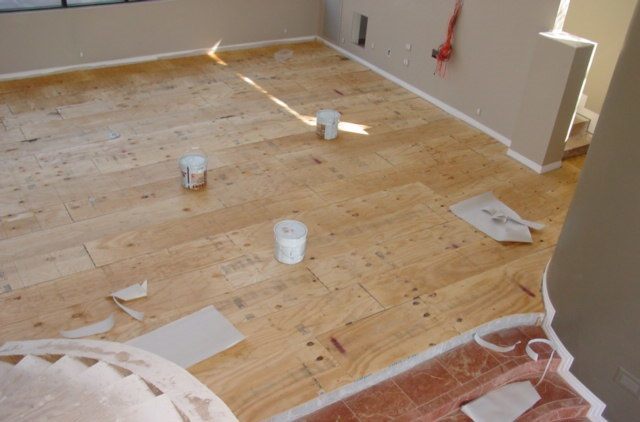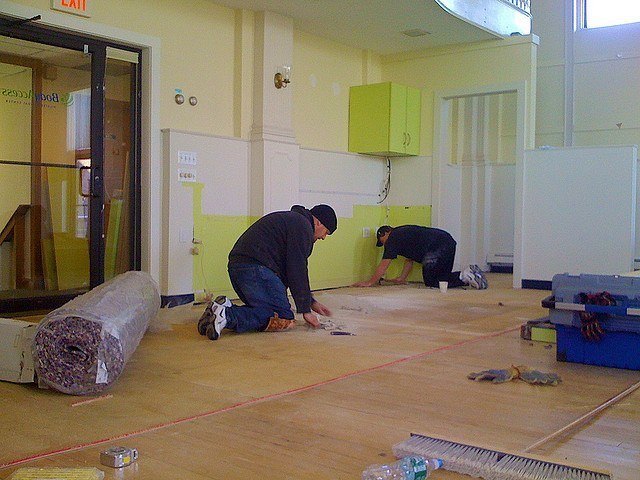Install a second layer of plywood making sure of stagger the bottom seam from the top glue brad nail the top plywood to the bottom plywood.
How to add acoustics to p ywood floor.
Consult the general explanatory notes in ga 600 fire resistance and sound control design manual to understand how to add insulation to a system without affecting fire performance.
Lay plywood on top leaving a expansion acoustic gap around all walls.
The plywood floats on top of the underlayment.
Lay carpet to soundproof the floor.
Add soundproof floor insulation.
Install plywood raft on top of floor mat combine two layers of 3 8 or thicker exterior ac grade plywood together.
If you have bare floors vibrations will travel easily through them as there s no cushioning to dampen the vibrations.
See how it feels sounds.
Install iso step from wall to wall loose lay.
Refit the floor and trim the underlay so that it s flush with the floor where it meets the wall.
Lets use a 3 4 piece of plywood and a 1 2 piece of drywall.
No matter how hard you try your floor will only be as good as the insulation batts between the floor joists.
Finally add a reliable acoustic underlayment that will increase both the iic and stc of the floor.
Next we put a piece of drywall on top of the plywood.
Check the installation options for your hardwood.
If there are none the hollow space between the subfloor and the ceiling drywall below will only amplify noise.
In this video i explore the possibility of making diy sound absorption panels on a budget later comparing them to much more expensive acoustic foam.
We can next add another piece of plywood to the second drywall piece.
Two layers of 1 2 plywood should be used with hardwood finished flooring quietzone acoustic floor mat select plywood that is uniform flat dry and free of defect to ensure that the finished floor is level.
Also the addition or deletion of insulation in a floor ceiling or roof ceiling system has the potential to reduce the fire resistance rating.
Then replace the skirting boards so that all underlay is no longer visible.
Adding acoustic underlay will add cost but it will also add comfort both to the ears as well as to the joints and muscles.
By varying the thickness of the drywall and plywood we use mass damping technology to slow down the vibrations that are being transmitted through the materials.
Building a floating floor in your recording studio is one of the most important steps in isolating the studio from the rest of the building.
Adding engineered hardwood to plywood will do very little to the acoustics.
Approach each layer independently adding thickness to plywood gypsum board and concrete wherever possible.
























